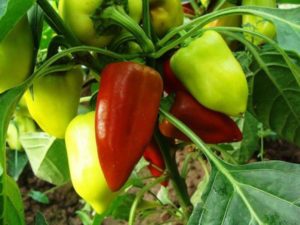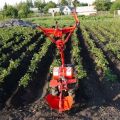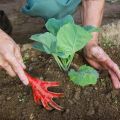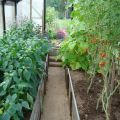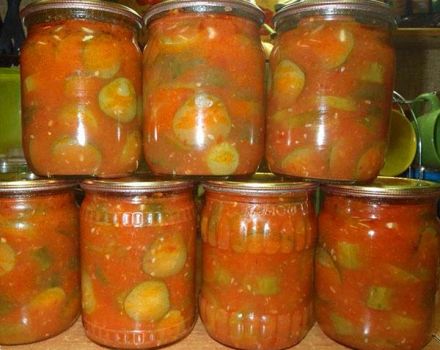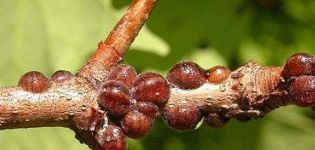Do I need to huddle peppers in an open field or greenhouse
Hilling is the process of loosening the top soil layer close to the crop. Such care is very important and useful for most plants, so summer residents ask themselves the question: is it necessary to sprinkle pepper?
The hilling process itself makes it possible for planting to grow correctly, promotes oxygen access to the root system, as a result of this effect, the culture starts up new roots that are necessary for recharge and stability in the soil.
Hilling blocks the processes of leaching of the land layer during heavy rains. This is an excellent prevention of diseases, hilling plays an important role before a cold snap, frost, hardening the crop, which helps to minimize all risks of freezing.
Points for and against"
Despite all the advantages of hilling, among summer residents there is no definite answer to the question of whether it is necessary to perform this procedure in relation to peppers. Gardeners are divided into two groups: one claims that peppers cannot be hilled, and the second is sure that this procedure is very useful for the plant. Each opinion has a clear reasoning that allows one to draw a conclusion about in what situation it is necessary to hilling, and in which it should be abandoned.
Most summer residents claim that hilling peppers is an unnecessary procedure. This opinion is due to the fact that the root system is located in the area of the upper soil layer, as a result of which it can be easily damaged during the loosening process. There is one more argument against hilling: the root system of the peppers has a neck, the growth of additional root branches for the implementation of the nutritive and fixing function of the plant in the soil is not required for the peppers.
Prolongation of the soil moisture retention period can lead to the spread of putrefactive pathologies on the root system, trunk.
There is also an opposite opinion. The second part of gardeners was convinced from their own experience that pepper responds positively to hilling, therefore vegetable growers consider such a plant care procedure mandatory. This position is due to the fact that due to the root system located in the upper soil layers, an increased flow of oxygen to it is carried out during loosening. Such oxygen treatment promotes the activation of the growth and development of the culture, enhances the biological function of beneficial soil microorganisms, and improves nutrition.
Hilling technology
Pepper does not tolerate the soil crust at all, so summer residents need to track the moments of its formation and eliminate dryness in time. Despite the benefits of loosening, summer residents urge to huddle peppers very carefully so as not to damage the roots.
To do this, you need to know the correct technology:
- It is worth considering that one of the features of bell pepper is considered to be slow growth in the first 10 - 14 days after transplantation. This feature is due to the strengthening of the rhizome. Hilling should not be carried out during this period.
- The first hilling should be done 24 to 48 hours after the second irrigation. The loosening depth should not exceed 6 - 8 centimeters.
- During mass flowering, one more loosening is necessary. This hilling can be deepened to a level of 8 - 10 centimeters.
- The third hilling of peppers is carried out at the time of the formation of fruit ovaries. It can reach a depth of 14 - 16 centimeters.
- In the phase of mass fruiting, the depth of loosening should be again reduced to 6 - 8 centimeters.
If the soil has a heavy structure, hilling can be done a little deeper in order to provide better heating and ventilation of the soil layer. However, this should be done very carefully so as not to damage the formed roots.
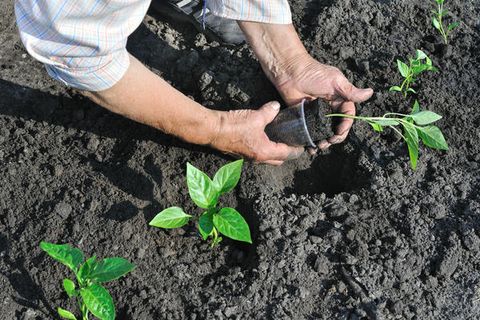
In addition to these cases, shallow loosening should be carried out after each watering or rain. During this soil cultivation, weeds should be removed. The planted plant must be hilled only after the formation of 4 - 5 true leaves. After such treatment, the soil in the garden bed should be mulched with compost fertilizer, covered with straw or other suitable materials.
When growing peppers in open ground, loosening should also be carried out in the aisles. In order not to harm the plant, several recommendations must be taken into account:
- Inter-row treatments during mass flowering are carried out at a depth of 10 - 12 centimeters.
- During the formation of ovaries, the soil should be loosened no deeper than 15 centimeters.
- During mass fruiting, processing is carried out at a depth of 22 - 25 centimeters.
- If the aisles are narrow, they must be stopped during mass flowering.
- Wide row spacings should not be cultivated after the crop has reached the height of the attachment of mini-machines or modern tractors.
- During the growing season, it is necessary to spud the plant 2 - 3 times in order to remove weeds.
Hilling allows the summer resident to sprinkle weed seedlings with a soil layer of 5 - 6 centimeters, under the yoke of which they die. During the growing season, it is possible to carry out 4 - 5 inter-row treatments.
The need for the procedure in greenhouses
Do peppers need to huddle if the culture is planted in greenhouse structures? Hilling peppers in a greenhouse is an optional procedure. This is due to the fact that new roots are not formed in planted crops, and this process is the main goal of hilling.
But since peppers do not tolerate the formation of a soil crust, the earth should be regularly loosened to a shallow depth. Such a procedure will be an excellent prevention of many diseases, saturate the plant root system with oxygen and exclude the formation of rot on the roots and stems. The procedure for loosening the soil in a greenhouse is best combined with airing.
Positive features
Many summer residents have been convinced from their own experience that peppers hilled in this way are distinguished by the intensification of their development. The procedure has a number of other advantages:
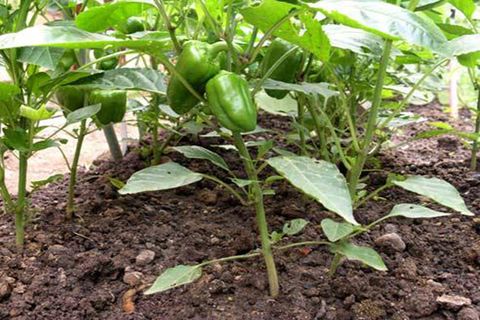
- improved air flow to the root system leads to accelerated growth and development of plant culture;
- indirect stimulation of beneficial soil microorganisms is performed, which have a beneficial effect on plant health and reduce the risk of common pathologies;
- reducing the risk of rot formation on the rhizome or plant trunk;
- such loosening allows you to control weeds in time.
A distinctive feature of the growth of bell pepper is that the culture forms well the adventitious root processes exclusively on green stems and before the formation of cotyledonous leaves. Hilling during this period only stimulates the process and helps the plant culture to grow and develop faster.
When the pepper stems are already stiff, the plant reacts negatively to the deepening of the root collar and loosening, which is carried out in the deep layers of the soil. This is because there is an increased risk of compromising the integrity of the superficial root system.
Subject to all the rules for hilling and loosening, planted peppers will respond positively to the procedure. Most often, hilling helps to accelerate the growth of pepper, increase yields during the period of mass fruiting. To do this, it is necessary to carefully cultivate the land with smooth movements that do not damage the integrity of the roots.
